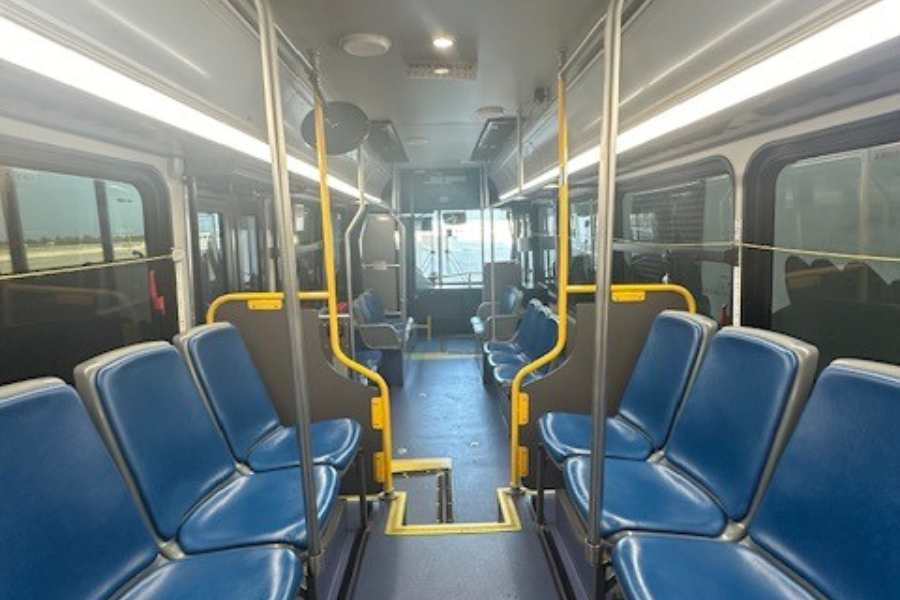Here are 10 top tips on capacity and vehicle selection for employee shuttle transportation:
1. Find out the needs of employees for transportation
Examine your current employee count and estimate how many will use the shuttle on a regular bases. Be aware of factors like the amount of staff you have, the work shifts and the most popular times to use. This information can help you determine the best vehicle capacity and ensure that the shuttles can accommodate various numbers of people.
2. Selecting the Right Vehicle Type
You can select the vehicles best suited for shuttle services according to your staff's requirements and the amount of them. Vans and minibuses are both viable choices. Minibuses can be used for small groups and they're able to maneuver through smaller space. Larger buses are the best for large groups. If employees travel with luggage or bags think about the layout of the vehicle and whether it has comfortable seating.
3. Evaluate Fuel Efficiency
The expense of fuel can be a significant factor in the budgeting for shuttle services. When selecting a vehicle, look for efficient fuel options that will reduce operating costs. Look into electric and hybrid vehicles because they provide the long-term benefits of saving money and are in line with the sustainability targets. Analyzing the fuel efficiency of different models can aid in making an informed decision which balances cost and capacity.
4. Consider accessibility features
To accommodate employees who have special needs, make sure that your vehicles are wheelchair-friendly. This includes features such a wheelchair lift or low floor that makes accessibility easier, and seating reserved for people with disabilities. Accessible transportation isn't only legal and is also a way to promote a more inclusive workplace.
5. Plan for growth and flexibility
As businesses change and grow the size of their workforces will also change. Take into consideration the possibility of growth in the future when selecting a vehicle. If you choose to invest in vehicles that are able to be arranged to accommodate different employee numbers or allow you to expand the seating capacity, this will give you the ability to adjust to changing needs of the workforce without needing to replace the vehicle often.
6. Look for safety ratings, features and reviews
Safety is paramount in the transportation of employees. Check out the safety features and ratings of vehicles before selecting one. Look for vehicles that are equipped with the latest technology, such as antilock brake, stability control, or collision avoidance systems. In order to protect workers while traveling, you must make sure that your vehicle is in compliance with all local and federal safety rules.
7. Maintaining and Reliability
Choose vehicles that have low maintenance and are reliable. A vehicle that is constantly required for repairs could result in shuttle interruptions and unhappiness among employees. It is crucial to study the reliability of each vehicle and establish a regular maintenance schedule. This will help keep them in good condition and extend their lives.
8. Make use of GPS as well as Fleet Management Software
The shuttle service you provide can increase efficiency by using GPS tracking software and fleet software. These programs provide real-time tracking and optimization of routes according to the patterns of traffic and schedules of employees. Additionally, using software to manage fleets can assist to monitor the performance of vehicles as well as fuel consumption and maintenance requirements, which will ensure that vehicles are being used effectively.
9. Employ feedback mechanisms for employees
Encourage employees to give feedback on vehicle comfort and capacity via surveys or suggestion boxes. Understanding their experiences can aid in identifying any issues with overcrowding, seating comfort, or accessibility. This feedback could be utilized to implement necessary adjustments to the vehicle or service to enhance your experience on the road.
10. Total cost of ownership Budgeting for the entire cost
TCO is the term used to describe the total cost of owning a vehicle. It covers fuel costs, depreciation, maintenance, and insurance. TCO analysis allows for informed decisions that balance initial costs with operating expenses in the long run. If you analyze all costs that come with a vehicle the company can choose one that fits within budgetary limitations and offers the necessary capacity and reliability.
These suggestions will assist you in selecting the best vehicles for your shuttle service for employees and also manage its capacity. You'll be able to provide a relaxing, safe and efficient service. Read the top employee shuttle for more recommendations including airport shuttle home pick up, sfo airport transportation, shuttle transportation to airport, airport service, airport shuttle service, private transportation from atlanta airport, airport transportation services, sfo airport shuttle, pick up service at airport, airport shuttle home pick up and more.

Top Tips On Vehicle Capacity And Alternatives For A Corporate Transport Services
Here are 10 suggestions to choose the best vehicle and capacity options when it comes to the transportation of corporate events.
1. Evaluate Event Attendance Estimates
Estimate the number of people attending the event. This can be determined by registration data or RSVPs. Understanding the number of expected participants will help you better plan your options for vehicle use and estimate the capacity needed to transport the participants.
2. Choose the right vehicle type
Choose the appropriate vehicle based upon the number of guests expected as well as the type of event. Consider using buses or vans that can transport many passengers. For smaller groups or VIP guests, luxury vans or sedans may be more suitable. Offering a range of vehicles, you can ensure that all attendees are comfortably transported.
3. Consider Accessibility Needs
Check that the cars you select can be used by all, even those with disabilities. This could mean selecting a vehicle equipped with wheelchair-lifts or low entry options. The inclusion of transportation options is not only a matter of legal compliance, it enhances all participant's experience.
4. Make sure you have multiple pick-up locations.
Make sure to plan for multiple pickup locations in order to ease transportation. It could be a central point like a hotel, an airport, or a bus station. By allowing different pick-up locations and locations, you'll be able to maximize attendance and reduce logistics issues.
5. Make reservations using a reservation System
You should consider using a booking system for your transportation. The system allows participants to reserve seats well ahead of time. This will ensure that that vehicles are fully filled and reduces the risk of crowding. A reservation system can also permit you to alter the capacity of your cars in accordance with demand.
6. Optimize Routes to Increase Efficiency
Create routes that are efficient to ensure that the vehicles are on time to arrive at and leave at the time they are due to leave. Analyze traffic and potential bottlenecks for optimal vehicle paths. The use of route optimization may decrease travel time while identifying the best routes.
7. We offer On-Demand Shuttle Service
If you are planning a large event, you may want to offer transportation for attendees so that they can book transportation as they wish. This is particularly helpful for events with multiple days or varying schedules. On-demand services are a great way to increase flexibility and make sure that attendees can travel to where they require it.
8. Monitor the utilization of vehicle capacity
Track the capacity of your vehicle during the event. By monitoring the number of seats that have been filled, it is possible to make quick changes. Analyzing the data gathered following the event can also aid in future planning.
9. Transport Information Must Be Communicated In a clear manner
Clearly communicate transportation details to attendees well in advance of the date. Include information on pick-up locations, schedules and types of vehicles. By using multiple communication channels including emails, event apps, or printed materials to inform attendees of the options available, you can ensure that everyone is aware.
10. Gather feedback for future improvements
Following the event, gather feedback from attendees regarding their transportation experience. It can be about vehicle comfort and timeliness as well as overall satisfaction. The feedback collected will help to pinpoint what went well and what can be improved in future corporate events.
Implementing these tips can assist organizations in managing capacity for vehicles and ensure smooth transportation for corporate events. The proper preparation and execution of the event can be a key factor in the overall success of the event, as well as a positive perception of the business. Check out the top https://domain.com/ for website advice including logistics web, group transport, transporting buses, global transport, mgt logistics, plan logistics, transport logistics company, group transport, manager transport, transportation management and more.
